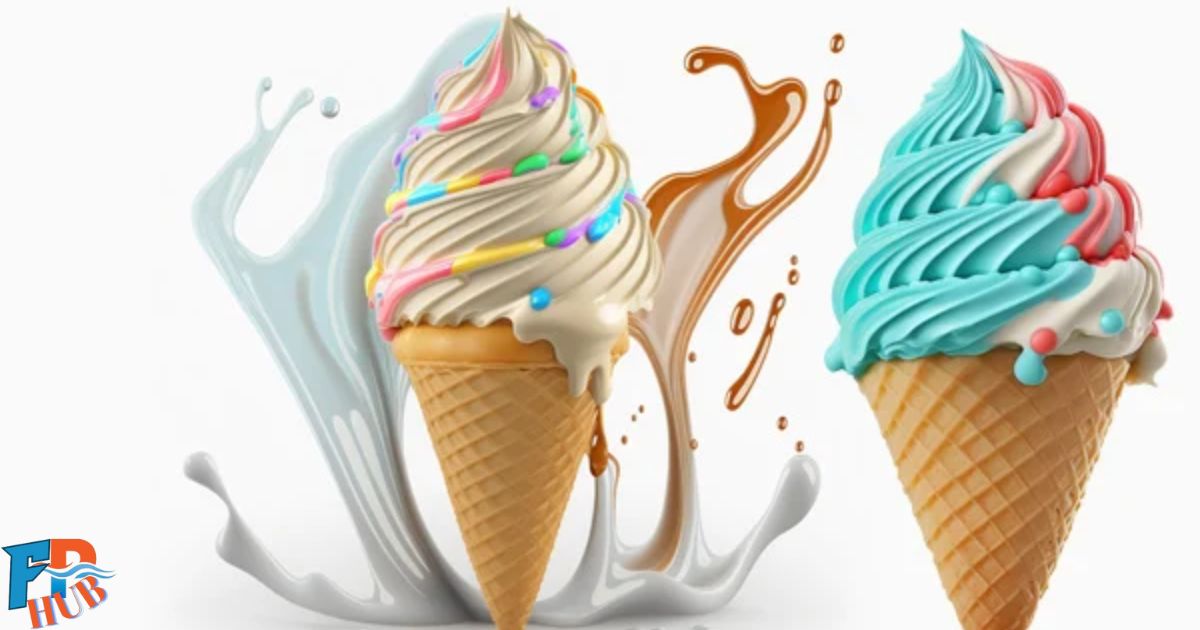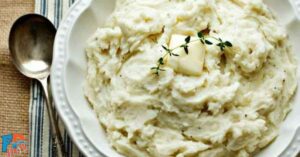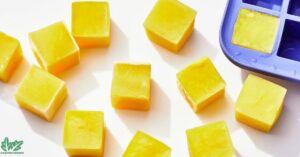In the world of frozen desserts, soft serve ice cream holds a special place. Many people wonder “what is soft serve ice cream” and how it differs from regular ice cream. This guide will explore everything about soft serve, from its unique properties to how it’s made. Let’s dive into the creamy, swirled world of this beloved treat.
Soft Serve Ice Cream
Soft serve ice cream is a type of frozen dessert that’s softer than regular ice cream. It comes out of a machine with a smooth, creamy texture. The history of “what is soft serve ice cream” dates back to 1934 when Tom Carvel’s ice cream truck got a flat tire. In the warm weather, his ice cream began to soften. Customers loved the softer texture, and a new dessert was born.
Today, soft serve is found everywhere from ice cream trucks to fast-food restaurants. Its popularity has grown steadily since its accidental discovery. In 2024, the global soft serve market is worth billions of dollars. Major chains like McDonald’s and Dairy Queen have made it a cornerstone of their dessert menus.
The Science Behind Soft Serve
The key to understanding “what is soft serve ice cream” lies in its composition. Soft serve has less butterfat content than regular ice cream. Most soft serve contains between 3-6% butterfat. Regular ice cream must have at least 10% butterfat. This difference affects both texture and taste.
Another crucial factor is the air content in soft serve. The soft serve machine process incorporates more air than traditional ice cream making. This is called overrun in soft serve. The air makes the dessert lighter and fluffier. It also increases the volume, making it more profitable for vendors.
Soft Serve vs Hard Ice Cream

When comparing soft serve vs hard ice cream, several factors come into play. The ice cream ingredients comparison shows both use milk, cream, and sugar. However, the proportions differ significantly. Hard ice cream often contains egg yolks, while soft serve typically doesn’t.
The hard ice cream churning process is quite different from soft serve manufacturing. Hard ice cream is churned slowly and stored at a colder temperature. The ice cream freezing temperature for hard ice cream is around 0°F (-18°C). Soft serve is kept at a warmer 18-22°F (-8 to -5°C).
Equipment and Production Process
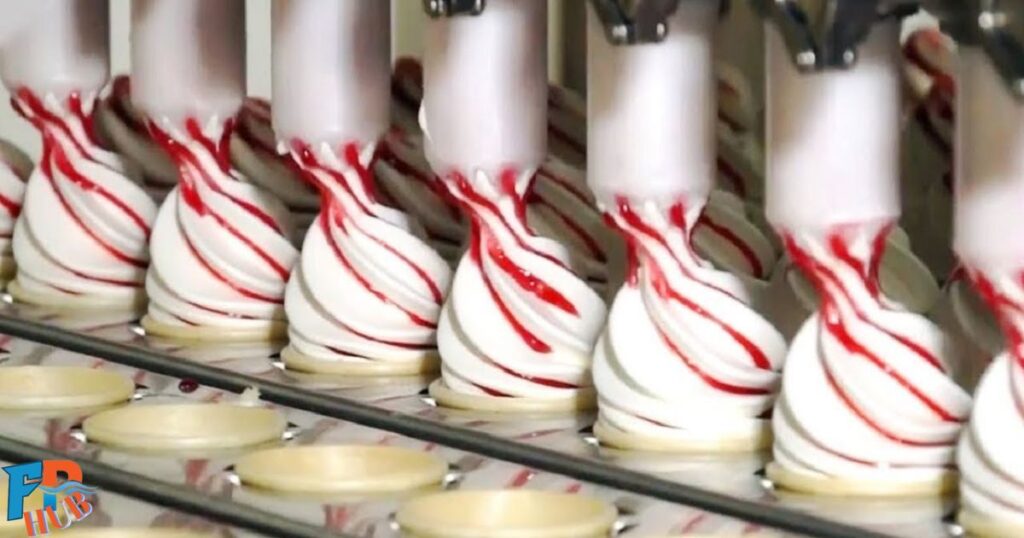
The soft serve machine process is central to creating this dessert. The machine keeps the mixture at the perfect temperature. It also adds air as it freezes the liquid mix. Most machines can produce different flavors from the same base mix.
There are various options for soft serve mix and powder. Some vendors use a liquid mix, while others prefer powder. The powder is mixed with water or milk before going into the machine. Both options can produce quality soft serve when used correctly.
Read This Blog: Macro Friendly Fast Food: Top Picks for a Healthy Diet on the Go
Storage and Maintenance
Soft serve storage methods differ from regular ice cream. Soft serve refrigeration happens right in the serving machine. The machine keeps the mix at the ideal serving temperature. In contrast, ice cream freezer storage requires special freezers that maintain a much colder temperature.
Proper storage affects both quality and food safety. Soft serve mix must be refrigerated when not in the machine. Once in the machine, it can typically last 24-48 hours. Regular cleaning and sanitizing of the machine is essential.
Cost Considerations
The cost of soft serve vs ice cream can vary significantly. Soft serve often has lower ingredient costs due to less butterfat. The higher air content also means more servings from the same amount of mix. However, the equipment costs for soft serve can be higher.
The Future of Soft Serve
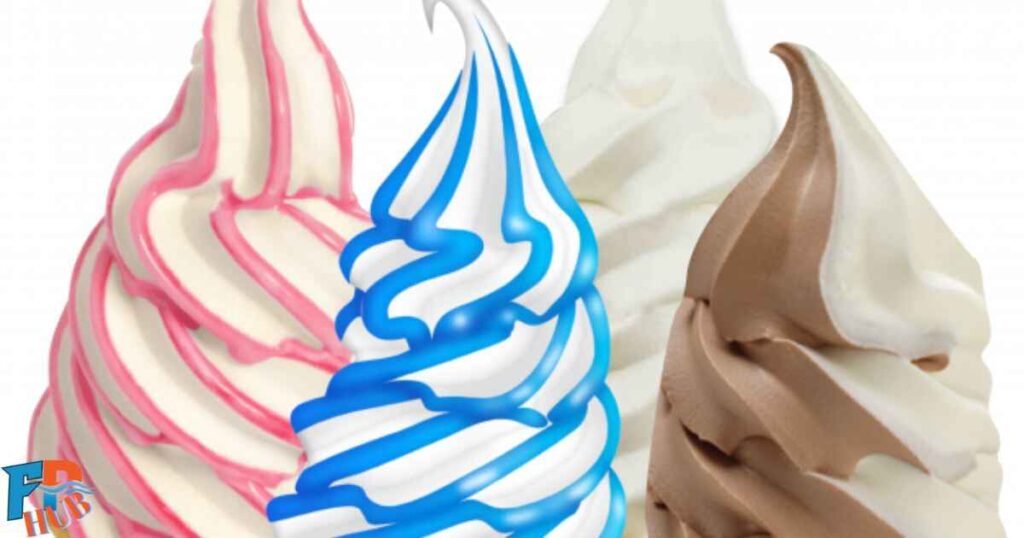
As we look ahead, the future of “what is soft serve ice cream” continues to evolve. New flavors and innovations are constantly emerging. Plant-based options are becoming more common. Machines are becoming more efficient and easier to operate.
The basic appeal of soft serve ice cream remains unchanged. Its unique texture and serving style make it a favorite for many. As technology advances, we may see new variations, but the classic soft serve will always have its place.
Also Read This Blog: Chinese Food Libertyville: A Comprancive Guide
In conclusion, understanding “what is soft serve ice cream” involves many factors. From its science to its storage, every aspect contributes to its unique character. Whether you’re a consumer or considering serving it yourself, knowing these details helps appreciate this beloved dessert even more.
Frequently Asked Question
What is the difference between ice cream and soft serve?
The main differences lie in butterfat content and serving temperature. Soft serve contains 3-6% butterfat, while regular ice cream has at least 10%. Soft serve is served at 18-22°F, whereas hard ice cream is kept at 0°F.
What is a soft serve ice cream made of?
Soft serve typically contains milk, cream, sugar, and stabilizers. Some versions use a soft serve mix and powder combined with water. The exact ingredients may vary by brand and manufacturer.
Is soft serve healthier than hard ice cream?
Soft serve usually has fewer calories due to lower butterfat content and higher air content. However, it often contains more sugar. Neither option is particularly healthy, and both should be enjoyed in moderation.
What is McDonald’s soft serve ice cream made of?
McDonald’s soft serve contains milk, sugar, cream, corn syrup, natural flavors, and stabilizers. Their recipe uses a specialized soft serve mix designed for their machines.
Why is soft serve cheaper than ice cream?
The cost of soft serve vs ice cream is lower due to several factors. Soft serve uses less butterfat and has higher overrun in soft serve (air content). This means more servings from the same amount of mix.
What is another name for soft serve ice cream?
Soft serve is sometimes called “creemee” in New England or “custard-style ice cream.” Some people refer to it by brand names like Mr. Whippy or Mr. Softee.
Conclusion
Understanding “what is soft serve ice cream” opens up a world of frozen dessert knowledge. From its unique soft serve machine process to its lower butterfat content, soft serve stands apart from traditional ice cream.
Whether you prefer the airy texture of soft serve or the dense richness of hard ice cream, both have their place in dessert history.
As we’ve explored the differences in ingredients, production, and storage, it’s clear that soft serve’s popularity comes from its distinctive characteristics. Next time you enjoy a swirl of this creamy treat, you’ll know exactly what makes it special.
